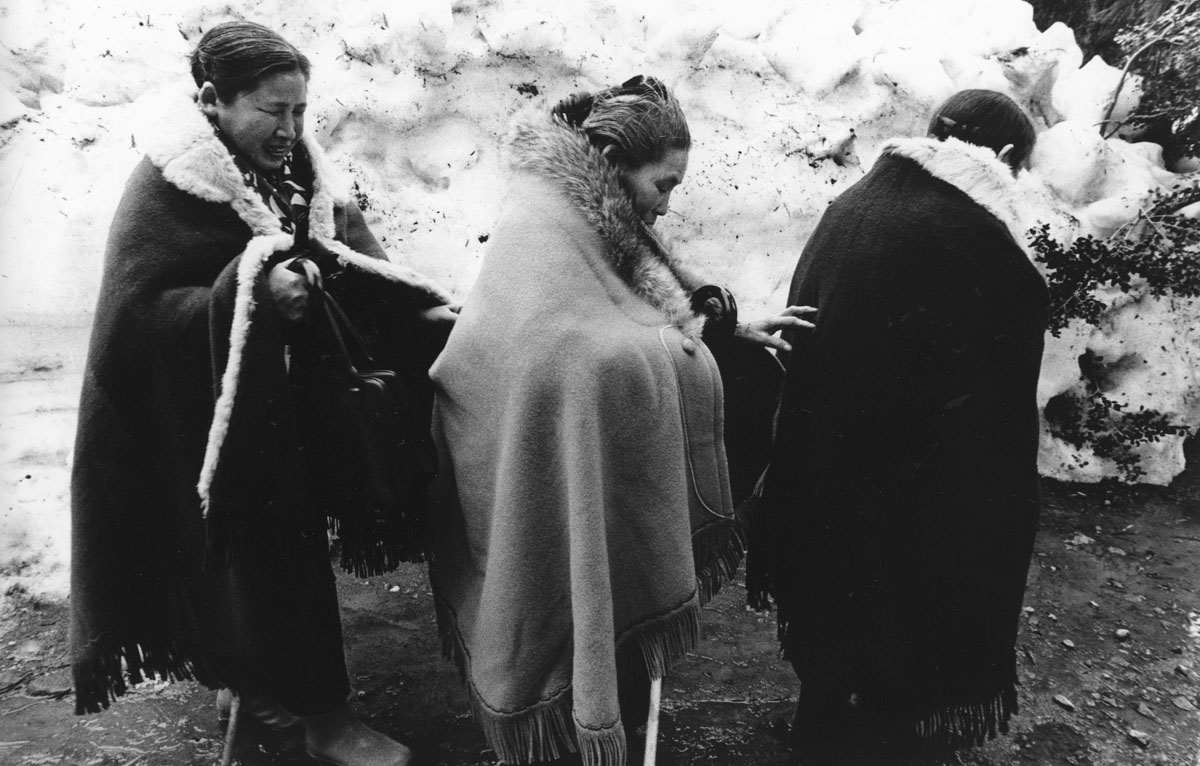Walking in a line, hands gently touching the person in front and guided by someone able-sighted, blind female entertainers, known as Goze, would travel up and down Japan, come rain or snow, to play the shamisen and perform jōruri narrative music. Walking in unimaginable conditions these women shared an ethical code and moral commitment that has been captured by Shoko Hashimoto in 36 black-and-white photographs currently on display at Zeit-Foto Salon.
Born in Ishinomaki in Miyagi Prefecture in 1939, Hashimoto graduated from Tokyo's famous photographic department of the Fine Arts Faculty of Nippon University in 1964, alongside the well-known Takuma Nakahira and Kazuo Kitai. As his career then began, the Goze were slowly disappearing. Their life was illustrated at its pinnacle by Utagawa Hiroshige's Ukiyo-e woodblock series "Fifty-three Stations of the Tokaido: Customs of the Road" (1845-46), which depicts traveling monks and Goze on the road, sustaining the spiritual and social welfare of Edo-period Japan.
Blindness, the result of measles and cataracts then common among children, led to girls as young as 8-years-old being brought into Goze apprenticeship — an apprenticeship that would last long into adulthood. Goze groups, managed by prefectorial guilds, equated professionalism to a tortuous life of travel, during which they had to take care that they didn't also become victims of prostitution and abuse along the way.

















With your current subscription plan you can comment on stories. However, before writing your first comment, please create a display name in the Profile section of your subscriber account page.